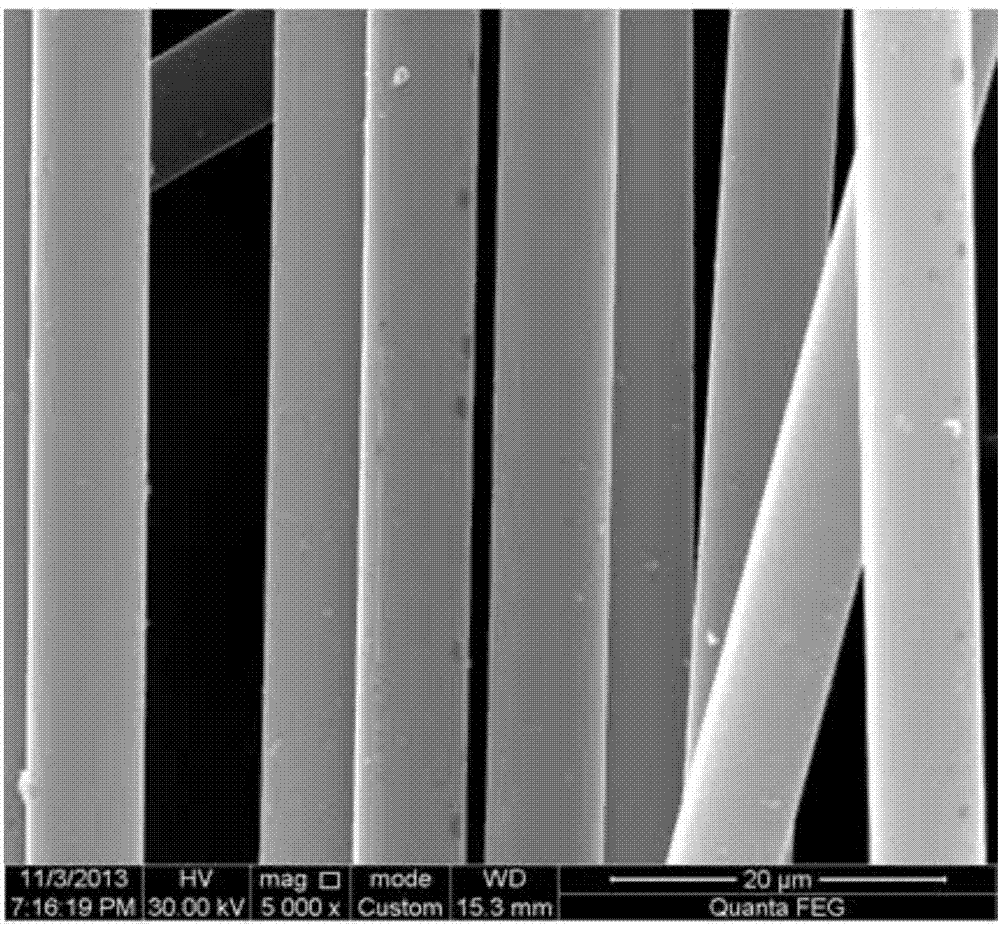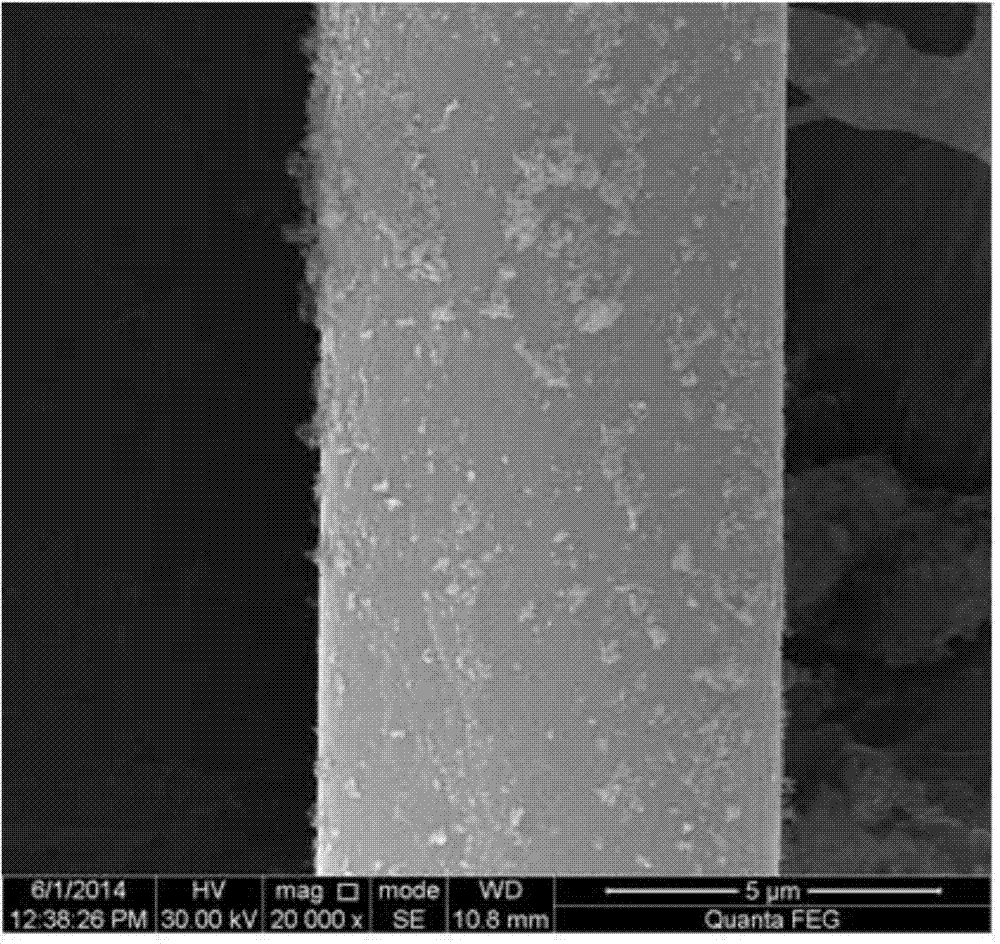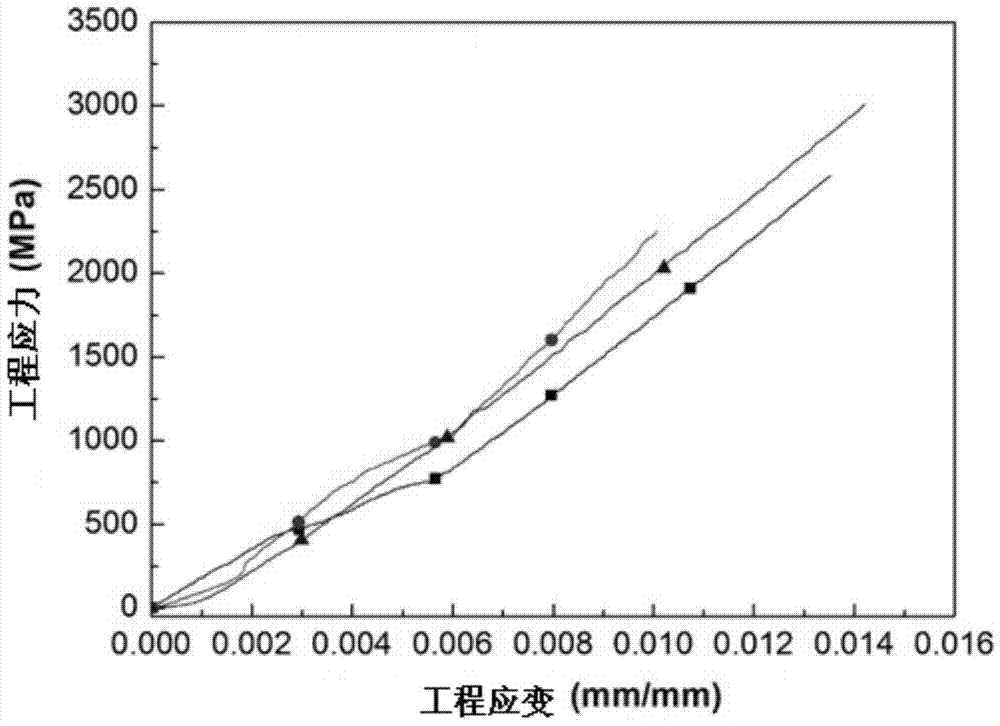Surface modification method for carbon fibers by nano silicon dioxide
A nano-silica, surface modification technology, applied in the direction of carbon fiber, fiber processing, textiles and papermaking, etc., can solve the problems of poor mechanical and thermal properties of carbon fiber, improve mechanical properties, improve wettability, and enhance transfer effect. Effect
- Summary
- Abstract
- Description
- Claims
- Application Information
AI Technical Summary
Problems solved by technology
Method used
Image
Examples
specific Embodiment approach 1
[0018] Specific embodiment one: the method for surface modification of carbon fiber by nano-silica in this embodiment is carried out according to the following steps:
[0019] 1. Surface halogenation of nano silicon dioxide to obtain the product;
[0020] 2. Nano silicon dioxide surface azidation treatment:
[0021] A. Add the product obtained in step 1, sodium azide and N,N-dimethylformamide into the reaction flask, heat up to 50°C, react for 24-48 hours, and centrifuge to remove the supernatant;
[0022] B. Add water and N,N-dimethylformamide, sonicate for 0.5-2 hours and then centrifuge. Repeat this step 3 times. The obtained product is vacuum-dried and weighed for later use.
[0023] 3. Oxidation treatment of carbon fiber:
[0024] Use acetone as a solvent in the Soxhlet extractor, condense and reflux at 70°C for 48 hours, and dry for later use. Add the dried carbon fibers to concentrated nitric acid with a mass fraction of 69%, and heat up to 80-100°C in an oil bath. °...
specific Embodiment approach 2
[0030] Specific embodiment two: the difference between this embodiment and specific embodiment one is: the concrete method that carries out surface halogenation to nano silicon dioxide in step one is:
[0031] a. Add nano-silica, triethylamine and toluene A into a dry three-necked flask, dissolve bromoisobutyryl bromide in toluene B and add dropwise to the three-necked flask, and react in an ice-water bath for 3 hours , after the temperature of the reaction system returns to room temperature, continue the reaction for 12 to 24 hours;
[0032] b. Centrifuge to remove the supernatant, then add toluene C, and sonicate for 0.5h to 2 hours, repeat this step 3 times, vacuum-dry the obtained product, and weigh it for later use;
[0033] The mass ratio of nano-silica to bromoisobutyryl bromide is 1:1-3, the mass ratio of nano-silica to toluene A is 1:15-20, and the mass ratio of bromoisobutyryl bromide to triethylamine The mass ratio of bromoisobutyryl bromide to toluene B is 1:5 to ...
specific Embodiment approach 3
[0034] Specific embodiment three: the difference between this embodiment and specific embodiment one is: in step one, the specific method for carrying out surface halogenation to nano silicon dioxide is:
[0035] a. Add nano-silica and toluene X to a dry three-necked flask, dissolve thionyl chloride in toluene Y and add dropwise to the three-necked flask. The reaction is carried out in an ice-water bath for 3 hours, and the temperature of the reaction system returns. After reaching room temperature, continue to react for 12 to 24 hours;
[0036] b. Centrifuge to remove the supernatant, then add toluene Z, and sonicate for 0.5-2 hours, repeat this step 3 times, vacuum-dry the obtained product, and weigh it for later use;
[0037] Wherein the mass ratio of nano silicon dioxide and toluene X is 1:15~20, the mass ratio of nano silicon dioxide and thionyl chloride is 1:1~3, the mass ratio of thionyl chloride and toluene Y is 1:5 ~10, the mass ratio of nano-silica and toluene Z is ...
PUM
| Property | Measurement | Unit |
|---|---|---|
| diameter | aaaaa | aaaaa |
Abstract
Description
Claims
Application Information
 Login to View More
Login to View More - R&D
- Intellectual Property
- Life Sciences
- Materials
- Tech Scout
- Unparalleled Data Quality
- Higher Quality Content
- 60% Fewer Hallucinations
Browse by: Latest US Patents, China's latest patents, Technical Efficacy Thesaurus, Application Domain, Technology Topic, Popular Technical Reports.
© 2025 PatSnap. All rights reserved.Legal|Privacy policy|Modern Slavery Act Transparency Statement|Sitemap|About US| Contact US: help@patsnap.com



